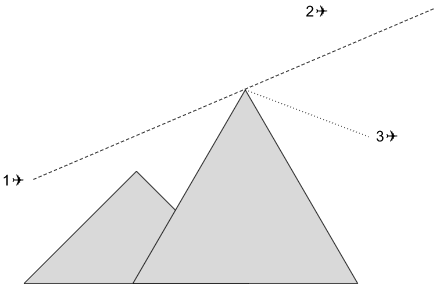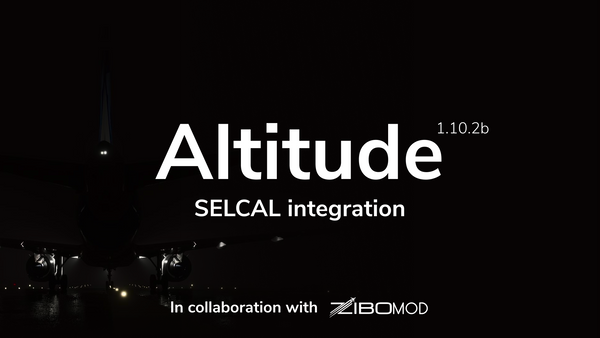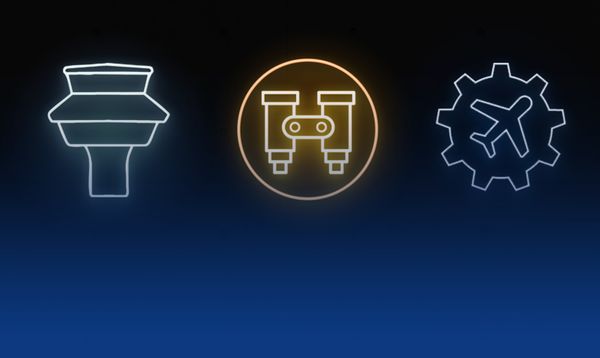The long-awaited release of Voice Unicom is here and available for all members of the IVAO Family to enjoy. For the first time on IVAO, pilots can communicate and broadcast their intentions to assist with avoiding in-flight conflict by voice.
Voice Unicom is the most anticipated addition to our network. It is packed with authentic radio effects and behaviour enabling it to be a realistic digital simulation of radio communication.
This introduction continues our aspiration to part ways with the historic TeamSpeak2 platform and the concept of joining a "channel" to communicate, becoming more and more of a distant past. Instead, this exciting addition uses high-quality audio codecs that are fully encrypted and accompany the already tried and tested Intercom and Voice ATIS systems on our in-house developed voice servers.
When pressing your push-to-talk button, the voice server dynamically computes the range of your aircraft radio and regulates which other aircraft are within range to receive your transmission. Within a few milliseconds, it can determine if two stations can communicate with each other using calculations and standards published by the International Telecommunication Union and the International Civil Aviation Organization.

The ability to simulate the loss of radio signal through the air is one of the brilliant capabilities of Voice Unicom, but that is merely one of many that has been incorporated. It also considers the curvature of the earth and the ability that terrain has to distort or block transmissions. We have stored the topography of every inch of the world in our voice servers, and using this data, the server can calculate the level of distortion the terrain will have.

We hope our community can enjoy the hard work of our outstanding developers and get their taste of realistic radio simulation. The days of crystal-clear messages, no matter the distance, will be over with this new feature. Members can differentiate between close and audible aircraft against distant and distorted ones.
Our network staff members have tested this new experience enhancer for over three months. It has been improved, adjusted and tweaked repeatedly to the final product we are delivering to our community now. As always, our User Support Team remains on hand to assist all community members with any issues they may face installing or using Voice Unicom.
We hope you can enjoy Voice Unicom to its full potential and look forward to hearing you on the frequency.
Frequently Asked Questions (FAQs)
How can I download Voice Unicom?
Visit https://altitude.ivao.aero and download Altitude. It is built in from version 1.12 onwards.
Will Voice Unicom work with IvAp and X-IvAp?
No, it only works with Altitude versions 1.12 and onwards. We recommend that all legacy software users, such as IvAp and X-IvAp, upgrade to Altitude.
How do I use Voice Unicom?
Simply ensure that 122.800 is tuned on COMM1 and press your push-to-talk button, ensuring your transmissions meet the requirements of Rule 2.3.6.
How far will my transmission reach?
There is no fixed figure; it is dynamic. Terrain, altitude and radio wattage all affect how far, and therefore who, your transmission is received.
How does Voice Unicom work?
You can read more about Voice Unicom in the article above.
Is Voice Unicom hosted on TeamSpeak2?
100%, not! We are saying goodbye to TeamSpeak2, and Voice Unicom is our first frequency hosted on a high-quality audio codec.
How will Voice Unicom be moderated if it is not on TeamSpeak2?
Our Network Supervisors have dedicated software to move around the globe and listen to the frequency whilst being advised of the VID and callsign of the individual transmitting.
When should I use Voice Unicom?
Our published Rule 2.3.6 specifies, “For air-to-air communications, messages shall be limited to broadcasting a pilot's position and/or intentions to assist with the avoidance of conflict and sequencing". Transmissions should occur in any airspace classification where an active controller is not present, irrespective of the presumed local traffic.
Is the use of Voice Unicom mandatory?
No, but it would be preferable. We understand that some members cannot use voice, so we have never discriminated against text-only members. Broadcasting your intentions by text will still be possible and acceptable by our rules.
Can I use my local language on Unicom?
Yes, but English must be used when traffic in the area is not proficient in the local language, as per Rule 2.1.3.
Can I turn off Voice Unicom?
Yes, you can! Simply remain tuned to 122.800 and turn down the volume dial to 0. You can therefore continue to broadcast via text on Unicom.
I am flying, and I can only hear static. Is there something wrong?
As Voice Unicom is a realistic digital radio simulation, all aspects are simulated, such as terrain and radio range. The static you hear is traffic at the edge of your receiving range broadcasting their intentions. The power of the broadcast is enough to trigger your radio but not strong enough to be heard clearly. This could be because the traffic is far away or distorted by the terrain. Nothing is wrong, and this is working as expected.
I heard a pilot broadcasting before a bleep blocked their transmission. What happened?
This means that a second pilot started their transmission whilst the first pilot was transmitting. Because both aircraft were within your range, the radio blocks both transmissions and produces a tone. This is called "block tone" and is correct behaviour. The block tone will disappear once one of the pilots has stopped their transmission.







